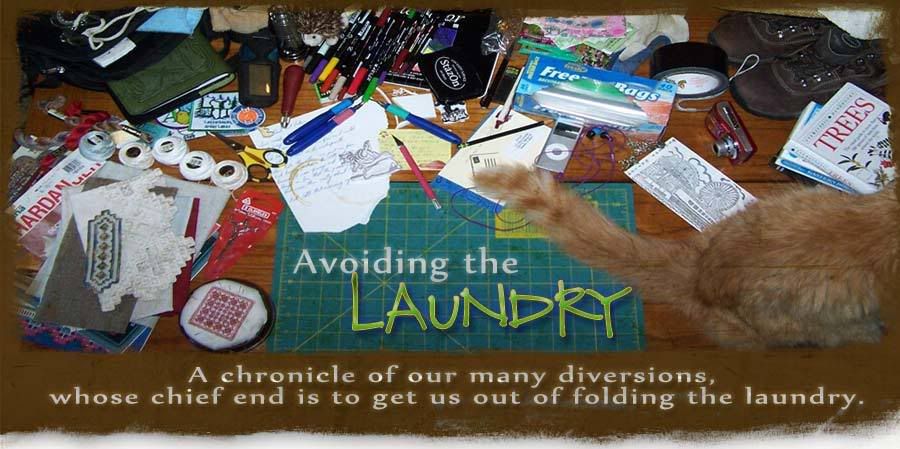Cable Stitch is one of the few stitches that is done on a diagonal path, instead of at right angles to the threads of the fabric. Each stitch only covers two threads of fabric, but 2 is half of 4, right?
You will be using the Perle Cotton size 8 and a size 26 needle. It will be a little trickier to tuck the tails of your thread under, but you'll figure it out.
Double Cable (Which is just plain, ordinary cable stitch. Don't get intimidated by the Double.)
Come up in your starting hole (1) and go down two threads over and two above (2). Up two threads to the left (3), and down two thread over and two above (4). Up two threads below (2), and down two over and two above (5). Continue. You will always bring your needle back up in the same hole as your last completed stitch.
One thing that I did not think to mention before (and am hoping that most of you have enough experience with a needle that you already knew this, so that you won't be mad at me for the neglect) is the second half (or down stroke) of a stitch, and the first half (up stroke) of the next stitch are done simultaneously. In other words, I do not pass my needle down through the fabric, move my hand to the underside to pull it through and then pass it back up in the next hole before moving my hand back to the top side of the fabric. My hand almost always stays on the top side of the fabric. The tip of my needle goes down and immediately back up in the next hole, and I pull both through from the top of the fabric. In the photo above, you can see that the needle is in two holes at the same time. When I pull the needle through, it will complete the stitch begun in hole 4, and start the next stitch in the row below.
Turning Corners
When you have completed the last stitch in a row and need to turn a corner, bring your needle up in the hole that will complete the next stitch (even though you haven't started it yet). Then take your needle down where that stitch would begin, and bring it up at the beginning of the next stitch. Essentially, you are doing the first stitch in the row backwards, and then all of the rest of them will go forward as normal. The only difference will be that now you will be starting the top row first instead of the bottom row, as you did before the corner.
Backstory
I really get the feeling that I am making a simple stitch needlessly complicated. Hopefully, you'll be able to follow the pictures, if not my descriptions. Feel free to holler at me if you need me to try again with my explanation.
Triple Cable
I am happy to announce that the Triple Cable stitch is simply two parallel lines of Double Cable, where the bottom row of one shares the same holes as the top row of the second. In order to stitch Triple Cable, first complete your series of Double Cable. Then, starting again at the beginning, stitch a second series of Double Cable parallel to the first. Since you will be sharing holes with the first row of stitching, make sure that the threads only lay next to each other and do not cross. You will also want to be mindful that your tension is consistent for both rows.
I am including a photo, even though there is not any Triple Cable on this piece.
And here is what our piece looks like now:
We may be able to finish this piece this week!






